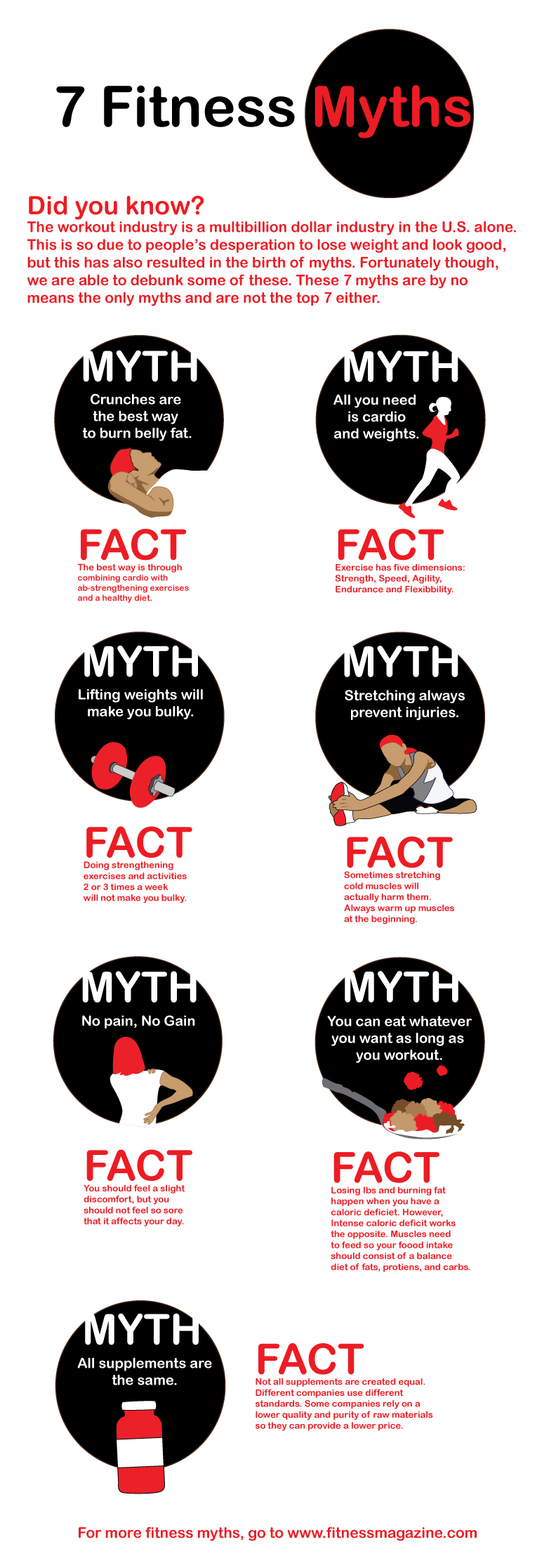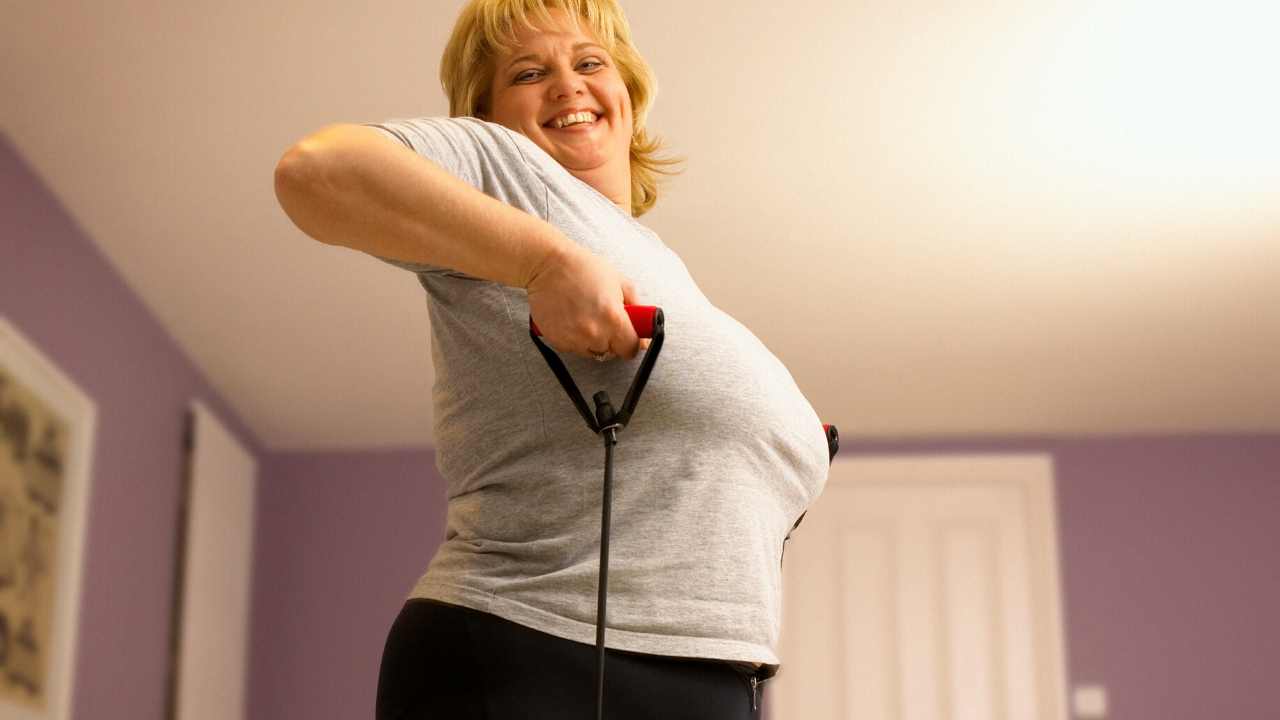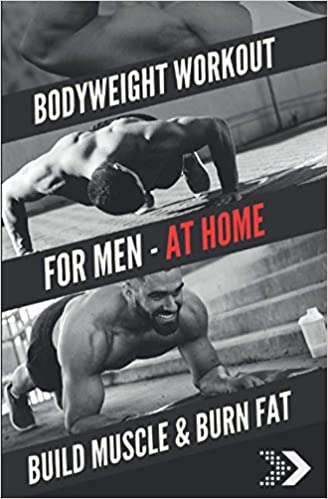
The old saying "you don’t want exercise at night" is probably something you have heard. However, this is actually one among the biggest myths about working out. Although there are many methods to exercise at nights, most people fail the core exercises. To make sure that you are performing the correct exercises, you should focus on your natural alignment, not on looking up during the workout. Here are 10 common myths about working out.
The first myth is that you shouldn't bend. A bending movement starts at the knees, and it should be performed with the hips. This rule is designed to give large muscles a safe workout. When performing this exercise, it is important to bend and not turn. This will help prevent injuries. This is the greatest myth of all. Make sure you include the right exercises into your routine in order to get the most out of it.

When it comes to exercise, there are no rules. Whatever form of exercise you choose, make sure that it suits your lifestyle and schedule. You will be able to stick to your fitness goals while still enjoying your workouts by making your schedule flexible. Don't stress over the small details and don't force yourself to do something you don’t like. Instead, focus on finding the exercise that suits your lifestyle and needs. You can always try another alternative if it is difficult to fit exercise in.
It is a good idea to start by learning how to properly work out if you're just starting out. Next, you can learn more advanced methods. For example, you can lift heavier weights but still do not use heavy machines. If you want to use weights, you should choose them that are challenging to your body. You can also do simple exercises like jumping jacks. It is important to choose a weight which challenges your body.
There are a few gym myths that should be avoided at all costs. To put it another way, squatting should not be done if your knees are bent above the toes. This is a common misconception in the group fitness world, and a person with good mobility should start a squat from their hips, not from their knees. Better is to work on one area at a given time. You should only do exercises that you are comfortable with.

The biggest myth about exercise is that it's pointless. It's because you can spend an hour walking on a treadmill, but not moving. The physical demands of exercise are what humans used to do. The treadmill is not meant to be used for exercise.
FAQ
How does an anti-biotic work?
Antibiotics can be used to kill bacteria. Antibiotics can be used to treat bacterial infection. There are many options for antibiotics. Some are administered topically, while others can be taken orally.
Many people who have been exposed can be prescribed antibiotics. One example is if someone has had chickenpox and wants to prevent shingles. For those with strep-thorphritis, an injection of penicillin could be administered to prevent them from getting pneumonia.
Doctors should prescribe antibiotics to children. Side effects of antibiotics can be more dangerous for children than for adults.
Diarrhea, the most common side-effect of antibiotics, is probably diarrhea. Other side effects that could occur include nausea, vomiting and dizziness. These side effects usually disappear once treatment has ended.
What is the difference of a virus from a bacteria?
A virus is an organism microscopic that can't reproduce outside its host cells. A bacterium, a single-celled organism, reproduces by splitting into two. Viruses are very small (about 20 nanometers) while bacteria are larger (up to 1 micron).
Viruses are often spread through contact of infected bodily fluids like saliva, urine or semen. Bacteria are often spread via direct contact with contaminated surfaces or objects.
Viruses may enter the body through cuts, scrapes. bites, or any other break in the skin. They can also enter the body through the mouth, nose, eyes and ears, vaginal, rectum or anus.
Bacteria can be introduced to our bodies by cuts, scrapes or burns. They can also enter our bodies from food, water, soil, dust, and animals.
Both bacteria and viruses cause illness. Viruses can not multiply within the host. Viral infections can only cause diseases in living cells.
Bacteria can cause illness by multiplying in the body. They can even invade other parts of the body. They can even invade other parts of the body, which is why antibiotics are necessary to eradicate them.
What should I be eating?
Get lots of fruits & vegetables. They are rich in vitamins that can strengthen your immune system. Fruits and veggies are also high in fiber, which makes them filling and helps with digestion. At least five servings of fruits and vegetables should be consumed each day.
Get plenty of water. Water flushes out toxins and helps you feel full between meals. Drink about eight glasses each day.
Eat whole grains instead of refined ones. Whole grains have all the nutrients they need, including B vitamins. Some nutrients have been removed from refined grains.
Sugary drinks are best avoided. Sugary drinks are high in empty calories and can lead to obesity. Instead, choose water, milk, and unsweetened tea.
Avoid fast food. Fast food lacks nutritional value. While it might taste good, it won't give your body the energy it needs to function properly. Avoid soups, sandwiches and other unhealthy options.
Limit your alcohol consumption. Alcohol can lead to poor nutrition and empty calories. Limit your intake to two alcoholic drinks per week.
Red meat should be cut down. Red meats are high-in saturated fat and cholesterol. Choose lean cuts such as beef, pork and lamb, chicken, fish, or turkey.
Statistics
- WHO recommends consuming less than 5% of total energy intake for additional health benefits. (who.int)
- In both adults and children, the intake of free sugars should be reduced to less than 10% of total energy intake. (who.int)
- WHO recommends reducing saturated fats to less than 10% of total energy intake; reducing trans-fats to less than 1% of total energy intake; and replacing both saturated fats and trans-fats to unsaturated fats. (who.int)
- The Dietary Guidelines for Americans recommend keeping added sugar intake below 10% of your daily calorie intake, while the World Health Organization recommends slashing added sugars to 5% or less of your daily calories for optimal health (59Trusted (healthline.com)
External Links
How To
How to stay motivated to stick to healthy eating and exercise
Healthy living: Motivational tips
Motivational Tips for Staying Healthful
-
Make a list of your goals
-
Set realistic goals
-
Be consistent
-
When you reach your goal, reward yourself
-
If you fail the first time, don't lose heart
-
Have fun